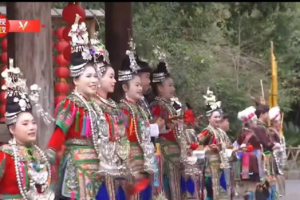
- (SINQEE is entailed in the Gadaa system unprecedented democratic culture)
BY MEKLIT WONDEWOSSEN
According to experts, throughout the 1960s and 1970s, women’s rights movement, also known as women’s liberation movement, was a varied social movement with a strong American foundation that zeroed in on entitling women more personal freedom and equal opportunities. However, as is the case in many instances, Ethiopia, is an exception. Surprisingly, in the Oromo Gadaa system advocating women’s rights stretches back 2000 years. This home-grown advocacy of the fair sex goes by Sinqee.
The word “Sinqee” in Afan Oromo refers to the skinny stick that women hold after marriage. It symbolizes procreation, productivity, and wealth. Under the Gadaa system, it wields social and religious influences. A governance structure known as the Gadaa system gives a green light to women to protect their rights and placate their husbands’ dominance and pressure. When daughters get married, mothers bless of their daughters with “Sinqee” so that they could use it in the protection of their rights.
The Sinquee rules are embodied in and expressed by a sharp stick, “Siinqee,” is cut from an aromatic tree. Trees locally known us ‘ulmaayyii’, ‘Waddeessa’, ‘Harooressa’, ‘Lemmana’, and ‘Urgeessaa’ are more preferable for making ‘Siinqee’.
Sinque is held by married women. Haroresa wood is preferably chosen for its thickness and strength. By no means it must be brittle..Sinqee is usually cut in the length that aligns will the height of the woman that carries it.
Bearers of the stick cannot use it as a walking stick or a cane. Nor could they attack animals with it. And when women hold Sinqee, they do not use it as a weapon. There is a saying Sinqee is a women’s army as women conduct many social and religious ceremonies in groups using Sinqee.
When a wedding draws close the bride’s mother prepares Sinqee for her daughter, along with Borati (a sort of a wooden pillow), and Bare/Okote/a type of special mug). Sinqee is the symbol of Birmaddhuma (freedom acquired by the virtue of nature). The ‘Borati’ is a symbol of motherhood. Okotee is a mug like gadget carved out of wood and decorated with silk. The bride’s mother ahead of time prepares milk in a okotee, which is a symbol of wealth, to hand it over to her daughter.
At a wedding, when the groom gets up to escort out the bride, her mother sits in front of the door holding Sinqee, Borati and Bare. The bride’s mother sings, “Ho bare, ho barse; Ho wadda dellee “and contented proffers to the bride Borati and Bare. “Ho wadda dellee “means “dear bridegroom notice the symbolism. I have entrusted you the responsibility of carrying for my daughter now your bride. Then Idaayi (the mother) gives Idaayiti (the bride) Sinqee, Borati, and Bare.
When the “Hamamons” bestmen and followers arrive home, the bride takes her special possessions or gifts (Sinqee, Borati, and Bare) to her new chamber room. The symbolism is the bride will turn female head of the house. She will be a mother figure. Even when the Hamamons offer a blessing, they utter “Sinqee Baaree Ofkala.” This means “you can grow and flourish in this marriage.”
This will protect the bride’s rights as a wife when she gets legally married and mix with a new community. Such woman in the community get together to form groups with women who have Sinqee in a bid to enforce different laws.
A woman bearing a Sinqee is highly respected in the community. One must not cross the path of a woman walking down the street carrying a Sinqee. One wouldn’t leave her aside while she is in need of help unless she specifically let him. If he is sitting he has to get up and let her pass. One does not cross a river before a Sinqee -carrying women.-
Sinqee -bearer followers are known as Atete or Ganya. When the women come out of the “beymaa/special chamber,” singing the sinqeey, one or more people, even elders, get off their horses, sit down, and mow the wet grass, saying “ilteninaa.” The women cut the grass and salute him, saying “obbayaa.”(Let your wish be realized) If someone leave without following the rules of the system when the women are giving blessings, s/he will be punished.
One of the manifestations of the rights given to Oromo women by Sinqee law in the Gadaa system is the support-relief of a woman, suffering beating at the hands of her husband; get from women who form such a group.
When the cry for help of a woman being beaten is heard, they come together with ululation “ililii,ililii,ililii…” Any woman who hears the alarm call be it while nursing, milking, or holding an “okottee”(a pot) must outright disrupt her work and grab her Sinqee, according to Sinqee’s law.
In a group the women conduct the Sinqee ritual heading to the house of a woman whose husband has just beaten his wife. They do so singing the Sinqee song. The women who arrive first hug and sooth the victim of harassment and take her out of the house, found a scene of violence against women, and give her a refugee somewhere else. She will be out of sight of her husband until the problem is addressed.
Even men whose wife is in this group couldn’t come close to the women leave alone the offender husband to his wife. Life spirals out of control in the violence perpetrator husband’s house. Babies wail ceaselessly. That is why, disturbed, everyone in the neighborhood sees urgent to bring the perpetrator before elders for justice. The women, circling the victim of domestic violence, protesting oppression with their chants voice their complaint to the “Caffee/Gadaa” Council (local elders) as per the Gadaa laws.
When the women bring their case to the platform, they sit and ask for the respect of their own honor. They also sit and cut the lush wet grass and celebrate it as ululation “Ilteninina.” The women blesss the elders with “hobbayaa(bon voyage).”After they perform this ritual, they do not forget to praise Sinqee with songs.
The body that sits down to hear their case and put the women’s dignity (wayyooma) into order or law is Gadaa. In other words, they confirm the existing rules and set the stage. Then presiding elder asks the women say for instance “What is wrong with our pregnant woman?”What are you suffering from?”. The woman who leads the group holds the battered woman in front of her and tells the Caffee as to what happened to the victim of violence. Law enforcement agencies identify the culprit and investigate the case. Until a decision is reached, the women sing for an end to oppression and violence against women.
Finally, the council assesses the damage and passes a decision. This decision may involve slaughtering a cattle among the cattle. The law of Sinqee enforces this decision: the women offer the slaughtered ox to the assembly, they sing their songs, and the woman in whose favor a decision is made return back home with a feeling of contentment
There are some who say that such help is rendered only for a woman with a bandage on her forehead or a woman who gave birth some months back, not for every woman who has been ill treated by her husband. As we heard from the elders, before the Gadaa system was somewhat slackened, such help was rendered to all women. The punishment for beating a midwife is sever.
Stop the fight
Whenever a skirmish surfaces or conflicts flare up among the Oromo clans or when there is a big war/battle, and when one group inflicts harm on the other, a woman who senses the unglamorous unfolding first, wakes up the women in her village with a sense of urgency. A group of women who communicated the news of the erupted clash immediately gather grabbing their respective Sinqee at hand.
As they rush to the confrontation field singing the song of Sinqee, they praise God who gave Sinqee the power of reconciliation. When they approach the contenders from both sides, they pray in the name of God for the battle to screech to a halt. When they arrive at the battlefield, they sing their song of peace and demand an immediate end to the skirmish. If the contenders refuse to see to reason and give up the fight, the peace-brokering women intervene. No matter how sever the battle proves to be , it will not spiral out of this rule that commands respect. The mess stops immediately. Sinqee is apowerful a reconciliation tool.
Adoption
Families who are unable to have a child for infertility reason may choose to adopt a child from a relative or from someone else. A woman who does not have a child and wants to adopt say an orphan under the adoption act of the culture carries Sinqee, milk, and chiko and heads to the adoptive parents.
The parents who are chosen to offer their child to adopters must have many children. Such parents are prevailed up on to give their children to a woman who goes to them bearing a Sinqee stick. Then she asks to adopt the child. An adopter woman who goes with Sinqee will not be treated with a cold shoulder..
The Ethiopian Herald March 8/2023





